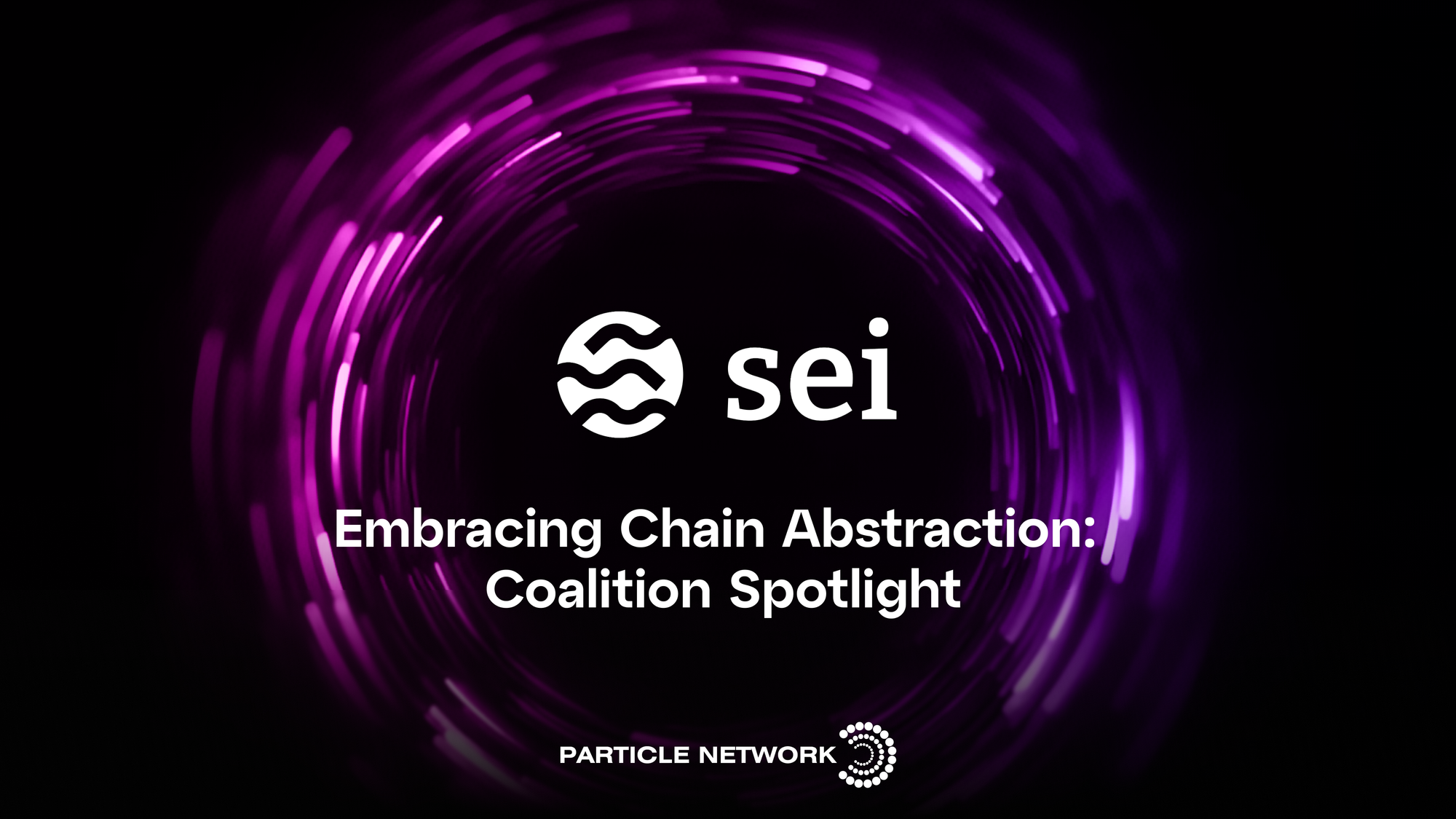Embracing the Chain Abstraction Experience: Q&A with Sei

Table of Contents:
Chain abstraction is a natural response to Web3’s organic expansion.
As new chains, L2s, and rollups emerge, the interconnectivity and seamless experience of chain abstraction (ChA) have become a top priority for our ecosystem. For blockchains themselves, this means a shift to a paradigm where they can compete based on their unique features and architecture with products that leverage them and are accessible to any user.
In light of this, today, we want to spotlight Sei, one of the first blockchains to commit to championing a borderless Web3.
A founding member of the Chain Abstraction Coalition, Sei participated in our very first Co-Testnet, showcasing their dedication to implementing chain abstraction to accelerate innovation across Web3. We’ve invited Sei to share their perspective on chain abstraction and its potential, the coalition’s goals, and their role in bringing them to fruition.
Let’s get right into it!
First of all, what is Sei?
Sei is the first parallelized EVM. This allows it to get the best of Solana and Ethereum—a hyper-optimized execution layer benefitting from the tooling and mindshare around the EVM.
By building a parallel blockchain with sub-second block finality and unprecedented transaction throughput, Sei provides an ideal environment for cross-chain dApps that need a scalable and responsive execution environment. This unlocks an entirely new design space for application developers and makes the EVM much cheaper to access.
Q&A: Sei on its unique features, chain abstraction, our Coalition, and accelerating Web3
#1: What projects would you highlight within your ecosystem that make Sei unique or that you think make the most out of your capabilities?
The release of Sei V2 has led to the emergence of numerous new DeFi protocols, with the two most notable ones being:
- Yei Finance: A borrowing and lending protocol that is a fork of Aave V3 and features SEI, USDT, and USDC for borrowing and lending.
- Dragon Swap, Sei’s inaugural EVM-compatible DEX.
#2: How do you feel about chain abstraction, both as a trend and in terms of the technologies enabling it?
Chain abstraction is an exciting development in the blockchain space. It simplifies user interactions and empowers developers to build versatile, chain-agnostic applications. The technologies driving this trend, such as application-level tools for cross-chain transactions and account-level solutions for unified accounts, are paving the way for a more seamless and interconnected Web3 experience. As a trend, chain abstraction is poised to enhance interoperability and accessibility, fostering innovation and collaboration across different blockchain ecosystems.
#3: What specific kind of projects do you think Sei has an edge to attract within a borderless Web3 paradigm?
Sei has a unique edge in attracting projects that require high performance and low latency, such as DeFi applications, real-time gaming platforms, and high-frequency trading systems. Our fully parallelized EVM architecture and robust infrastructure make it an ideal environment for projects that need to process transactions quickly and efficiently. Additionally, Sei's focus on providing a seamless developer experience can attract innovative projects looking to leverage its advanced capabilities.
#4: What characteristics of Sei (e.g., fully parallelized EVM architecture) do you think can help it attract developers once chain abstraction is broadly introduced across Web3?
Sei's fully parallelized EVM architecture is a significant draw for developers, as it enables high throughput and low latency, essential for scalable and efficient dApps. This architecture, combined with its developer-friendly tools and resources, positions Sei as a prime platform for building sophisticated, chain-agnostic applications. As chain abstraction becomes more prevalent, Sei's ability to handle complex, cross-chain interactions smoothly will make it a preferred choice for developers aiming to create next-generation Web3 solutions.
#5: Chain abstraction will undoubtedly lead to a whole new paradigm for how blockchains compete and collaborate. How do you think this can benefit you, and how do you see your user and developer base adapting to it?
Chain abstraction opens up new avenues for competition and collaboration among blockchains, ultimately benefiting the entire ecosystem. For Sei, this means attracting a diverse range of projects and developers who value interoperability and ease of use. Our user base will benefit from a more seamless experience, where managing multiple wallets and tokens across different chains becomes a thing of the past. Developers will appreciate the streamlined process of building cross-chain applications, fostering innovation, and driving ecosystem growth.
#6: How does Sei's participation in the Chain Abstraction Coalition align with your long-term strategy for ecosystem growth and developer adoption?
Sei's participation in the Chain Abstraction Coalition is a strategic move to stay at the forefront of technological advancements and industry trends. By actively contributing to and collaborating with other leaders in the field, Sei can influence the direction of chain abstraction development and ensure its platform is well-positioned to attract top-tier projects and developers. This alignment with the coalition supports our long-term strategy of fostering a vibrant, innovative ecosystem and driving widespread developer adoption.
#7: Besides chain abstraction, what other major trends in the industry can lead to the mass usage of Web3 products and services?
In addition to chain abstraction, several other trends are likely to drive mass adoption of Web3 products and services. These include the rise of DeFi, the increasing popularity of NFTs, the growth of DAOs, and advancements in security technologies. Each of these trends contributes to a more robust and user-friendly Web3 ecosystem, encouraging broader participation and utilization of blockchain-based solutions.
Chain abstraction is inevitable
By becoming pioneers in embracing chain abstraction, blockchains like Sei are spearheading a paradigm shift for Web3—one where ecosystems differentiate themselves based on their unique features and innovations.
In this regard, technological differentiators, such as Sei’s fully parallelized EVM architecture and embracing of chain-agnostic dApps, position it to welcome an era of unified liquidity and users, aiding Web3’s expansion through borderless, state-of-the-art products.
Stay tuned to the Chain Abstraction Coalition's developments by following us on X, and make sure to read our official announcement to learn all about it!
Particle Network's Chain Abstraction solutions are 100% free for developers and teams. By integrating them, you can set your project in a path to leveraging chain abstraction.
About Particle Network

Particle Network powers chain abstraction, addressing Web3's fragmentation of users and liquidity. This is enabled by Particle's Universal Accounts, which give users a unified account and balance across all chains.
Share this article
About the author(s)


